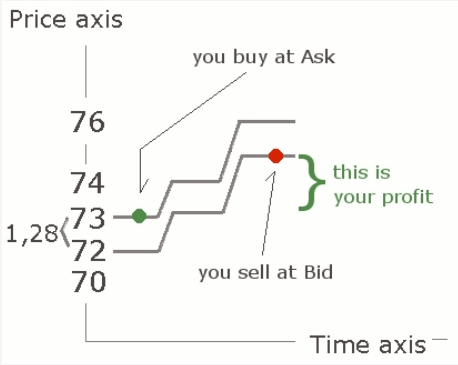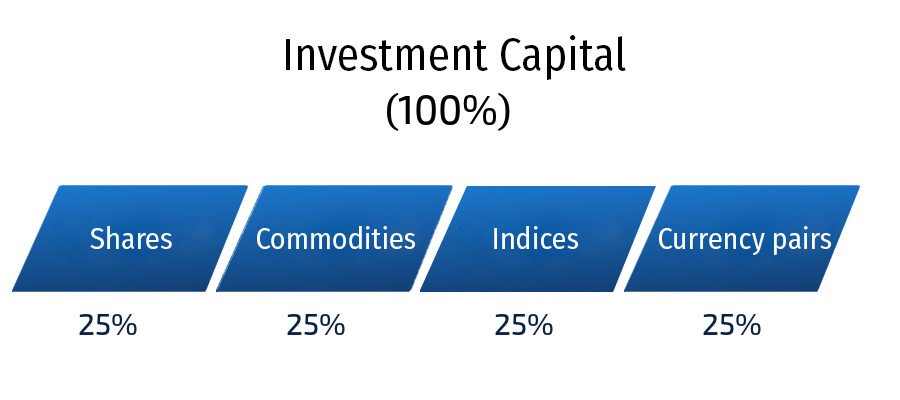Contents:


Current liabilities come in various forms, such as short-term loans, accounts payable, and accumulated expenses. This percentage is arrived at by merely dividing the current belongings by the current liabilities. If the answer is less than 1.zero, this indicates the corporate has a negative working capital with too few liquid assets to cowl the quick time period bills. On the other hand, if the ratio is above a 2.zero this might indicate poor administration of the capital.
Finally, this calculation can also help you identify trends in your company’s working capital position. The working capital target is the desired level of working capital that a company should maintain in order to support its operations. This target may be set by management or shareholders and can vary depending on the industry and the company’s specific needs. A target working capital adjustment is a financial adjustment made to a company’s net working capital position in order to bring it closer to the target.
The way you manage your working capital will make a big difference to your business. As stated above, a positive working capital ratio indicates the business is well-positioned to pay its short-term debts. While a negative working capital reflects the financial difficulties to settle short-term debts. If a company’s owners invest additional cash in the company, the cash will increase the company’s current assets with no increase in current liabilities. One option is to postpone payments to suppliers, as they are a source of income for the company. It may, however, be difficult to prolong payments for an extended period without provoking the wrath of suppliers.
A higher we can see working capital figure changing suggests that the company has more of its current assets than it does of its liabilities, thus giving them an advantage when confronted with meeting its short-term financial demands. Similarly, a lower NWC ratio indicates that the company may struggle to cover its short-term debt obligations and investments. When the calculation result’s positive, a enterprise has greater than sufficient liquid belongings to pay its bills and is using its property effectively. When the calculation is unfavorable, a business does not have sufficient liquid assets to pay its payments and may be at risk of bankruptcy.
What is a Working Capital True-Up Calculation
This is valuable information for decision-makers who need to know whether the company can continue operating as usual or if changes need to be made. When a business is fully operational, several, if not most, current asset and current liability accounts are likely to alter. As a result, the company’s working capital position has probably already changed by the time financial data is gathered. One of net working capital’s typical drawbacks is that the calculation ignores cash flow, which is crucial in paying down debt.
If the Long Term Fund requirements of a company are met just out of the Long Term Sources of Funds, then the whole fund generated from operations will be represented by increase in Working Capital. However, if the Funds generated from Operations are not sufficient to bridge a gap of Long Term Fund Requirements, then there will be a decline in Working Capital. An asset purchase agreement is a contract used to sell and transfer ownership of assets, such as businesses, real estate, or vehicles. This type of agreement typically includes provisions for the buyer to make payments over time to the seller. A company’s potential for rapid expansion can also be predicted using net working capital. It might have enough money to quickly expand the business if it has substantial financial reserves.
The Influence of Small Businesses on Our Economy
Working capital refers to the distinction between your company’s current assets and present liabilities. In accounting, the term “present” refers to assets you could convert into cash or liabilities that are due in lower than 12 months. Typically, these liabilities are brief-term loans somewhat than long-time period debt similar to an unique loan if you opened your business. All debts a corporation owes or will be due within the next 12 months are collectively considered current liabilities. Since current liabilities reflect the sum of money a firm will pay shortly, they should be closely monitored. Businesses may find it difficult to guarantee they have adequate cash on hand to cover their responsibilities.
How the Sale of Signature Bank’s Mortgages Could Affect NYC Tenants – THE CITY
How the Sale of Signature Bank’s Mortgages Could Affect NYC Tenants.
Posted: Wed, 03 May 2023 09:00:00 GMT [source]
For instance, if a company can better handle its stock and its accounts receivable, the corporate’s cash and liquidity will improve. The working capital that a company has to work with is calculated as its current assets minus current liabilities. Good working capital management also keeps cash flowing, thus enabling the company to generate enough cash to fuel its own growth rather than raising debt from outside.
The working capital ratio, which divides current assets by current liabilities, indicates whether a company has adequate cash flow to cover short-term debts and expenses. Because both figures are said within the balance sheet of your company, the calculation of working capital is pretty simple. A great amount of working capital or an increase in working capital means that your company’s property are sufficient to cowl liabilities that are quickly due. A adverse change in working capital means your company most likely can’t pay bills which might be coming due, which may imply that you have to make some modifications. A fast have a look at a company’s balance sheet information over the interval of some years shall be a wonderful indicator of the financial health of that firm. A positive flow of capital predicts that you have a good foundation for growth, progress, and business building.
Step III: Preparation of Funds Flow Statement
Since working capital is equal to the distinction between current assets and current liabilities, it may be both a positive or a unfavorable quantity. Of course, positive working capital is all the time preferable since it means a company has enough to pay its working expenses. Current assets typically embody cash held in current and financial savings accounts, inventory, accounts receivable, pre-paid bills and quick-term investments. In accounting phrases, it’s the difference between present property and present liabilities . A healthy business could have ample capacity to repay its current liabilities with present property.

● Changes in net working capital do not always indicate future performance; other factors may have a greater influence on overall profitability. You need to answer this question considering serval attributes of working capital discussed above. Owners of small and medium sized businesses may take advantage of its simple qualification criteria . A purchase price adjustment is a change to the original purchase price of an asset that is made after the sale has been completed. This type of adjustment is typically made when the asset is found to be worth less than the original purchase price.
This will allow businesses to track their estimated working capital position over time and identify any trends that may emerge. Additionally, performing this calculation regularly will ensure that businesses are always aware of their current financial situation and can make necessary changes in a timely manner. If a company holds too much inventory, this can cause an increase in current assets and reduce its NWC ratio. Similarly, if inventory levels are too low, current assets will decrease, and NWC will be affected negatively.
This calculation can help executives and other decision-makers understand whether the company has enough cash on hand to cover its expenses in the short term. There are several factors that go into a working capital calculation, so it’s important to understand the components involved before you start calculating. In this blog post, we’ll walk through the basics of what goes into a working capital and how to use this information to make informed decisions about your business.
The working capital figure, which is also known as working capital, is defined as a company’s current assets minus its current liabilities. The Funds Flow Statement Analysis helps the investors to decide whether the company has managed the funds properly. It also indicates the Credit Worthiness of a company which helps the lenders to decide whether to lend money to the company or not. It helps the management to take policy decisions and to decide about the financing policies and Capital Expenditure for the future.
On the other hand, a negative working capital balance indicates that a company has more liabilities than assets and may have difficulty meeting its financial obligations in the short term. Or organisation may be determined by subtracting the current liabilities from the total current assets. Using this ratio, you can see whether a company has enough assets to cover its short-term debts.
Community banks confident despite billions in CRE exposure – The Business Journals
Community banks confident despite billions in CRE exposure.
Posted: Fri, 05 May 2023 11:00:00 GMT [source]
24 years old Early Childhood (Pre-Primary School) Teacher Charlie from Cold Lake, has several hobbies and interests including music-keyboard, forex, investment, bitcoin, cryptocurrency and butterfly watching.
- Khatabook will not be liable for any false, inaccurate or incomplete information present on the website.
- By calculating this figure, investors and creditors can better assess how solvent a company is and whether or not it can stay financially afloat.
- Or organisation may be determined by subtracting the current liabilities from the total current assets.
- Net working capital is a critical metric used to measure a company’s liquidity, financial stability, and overall performance.
This tells the enterprise the quick-term, liquid assets remaining after short-time period liabilities have been paid off. Working capitalrepresents a company’s capacity to pay its present liabilities with its present belongings. A working capital true-up calculation is a way to measure and track a company’s liquidity over time.
‘Cash keeps coming’: Equinor profits top forecasts in strong first quarter – Upstream Online
‘Cash keeps coming’: Equinor profits top forecasts in strong first quarter.
Posted: Thu, 04 May 2023 05:44:00 GMT [source]
Working capital is the difference between current assets and current liabilities. The Cash Payment made for purchase of Fixed Assets and Investments is an application of Funds. But if the purchase if made by issue of shares or debentures, such a transaction will not constitute application of funds. Similarly, if the purchases are on credit, these will not constitute fund applications.
Second, a working capital calculation can help you track your company’s liquidity over time. This information can be used to make informed decisions about how to allocate resources and manage cash flow. You will pay all you short term money owed, working bills, and salaries with additional to re-spend money on your corporation. On the other hand, a unfavorable working capital, in which you’ve extra quick liabilities than money assets, especially as a yearly trend, can be a huge red flag to buyers. If a company obtains a long-term loan to replace a current liability, current liabilities will decrease but current assets do not change.
This makes net working capital an important tool for investors and creditors alike when evaluating the performance of a business. Setting up a net working capital schedule allows businesses to monitor their current assets, liabilities, and overall net working capital figures to ensure they remain solvent and on track for success. Calculate the net working capital by subtracting/deducting the company’s current liabilities from its current assets. A difference between the two thus presents the company’s liquidity, stating whether it holds sufficient assets to meet short-term liabilities. Working capital ratio of above 1 indicates the business has enough cash to pay its short debts. Similarly, a working capital ratio below 1 indicates negative working capital and business is facing some sort of financial difficulties in paying their debts.
Investors are requested to note that Stock broker is permitted to receive/pay money from/to investor through designated bank accounts only named as client bank accounts. Stock broker is also required to disclose these client bank accounts to Stock Exchange. Hence, you are requested to use following client bank accounts only for the purpose of dealings in your trading account with us. The details of these client bank accounts are also displayed by Stock Exchanges on their website under “Know/ Locate your Stock Broker”. ● Working capital is limited to a company’s short-term investments and debt obligations, so it does not provide insight into long-term performance.
